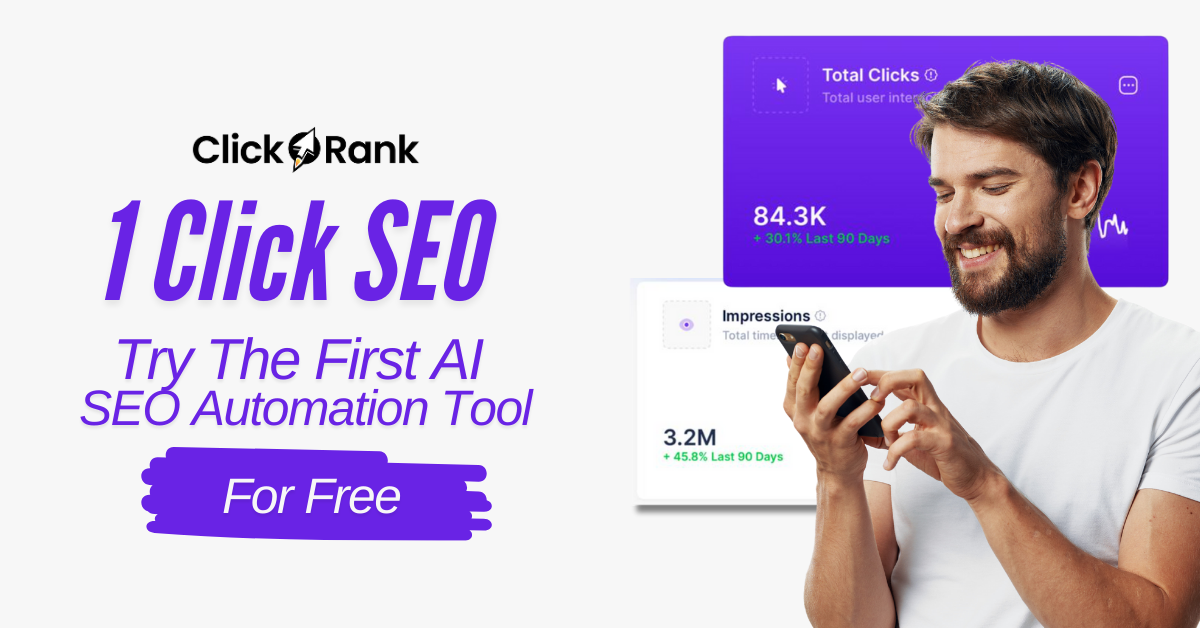Picture this: You’re wandering through a packed farmer’s market, but nobody notices your booth because your sign says ‘Miscellaneous Stuff.’ That’s what happens to thousands of business owners who overlook Google Business Categories. Here’s how a random lunch with a pizza shop owner revealed the surprisingly weird world of GBP—plus the odd trick that put their shop on everyone’s radar.
The Power of Categories: Hidden Multipliers Most Ignore
How One Thrift Shop’s Obscure Category Tripled Foot Traffic
Imagine running a cozy thrift shop on a busy street, but feeling invisible online. That was the reality for Lisa, a small business owner who thought she’d done everything right. She copied the Google Business Profile categories of the big chain thrift store across town, assuming that was the secret sauce. But her shop barely showed up in local searches, and foot traffic was flat.
Everything changed when Lisa switched her main category from the generic “Thrift Store” to the ultra-specific “Vintage Clothing Store”. Within two weeks, her foot traffic tripled. The difference? She stopped hiding in plain sight and started speaking Google’s language.
Lisa’s story isn’t unique. Choosing the right Google Business Profile categories is a proven strategy for local visibility. The best Google categories aren’t always the most obvious ones—they’re the ones that match exactly what your customers are searching for.
Why Google’s Category System Works (Think Like a Librarian)
Google isn’t a robot randomly sorting businesses. It’s more like a meticulous librarian, organizing millions of business “books” so searchers can find exactly what they want. When you pick your local SEO categories, you’re telling Google where to shelve your business. If your “book spine” doesn’t match your story, you’ll end up in the wrong section—overlooked by the people who need you most.
“Treat your business profile like a book spine—make sure the title matches the story inside.” – Joy Hawkins
This is why Google Business Profile categories matter so much. The right category acts as a hidden multiplier, boosting your visibility in local searches and sending more customers your way.
Ultra-Specific vs. Broad: The Surprising Local SEO Advantage
Many business owners make a big mistake: they copy competitors’ categories or pick the broadest option, thinking it will cast a wider net. But in reality, ultra-specific categories often outperform broad ones—especially in niche searches.
- Broad category: “Restaurant”
- Ultra-specific: “Vegan Restaurant” or “Jamaican Restaurant”
If you’re a vegan eatery, choosing “Restaurant” as your main category means you’re competing with every pizza place, burger joint, and steakhouse in town. But “Vegan Restaurant” puts you front and center for people searching for exactly what you offer.
Data backs this up: Lisa’s thrift shop saw a 3x increase in foot traffic after switching to a more specific category. She didn’t change her hours, her inventory, or her marketing—just her Google Business Profile categories.
Why Most Businesses Miss This Hidden Multiplier
It’s easy to fall into the trap of copying what others do. But blindly following competitors often means missing out on the best Google categories for your unique business. Google’s algorithm rewards relevance and specificity. When you choose a category that perfectly fits your business, you’re more likely to show up in the right searches—and less likely to get lost in the crowd.
- Don’t: Pick the most popular or generic category just because it seems safe.
- Do: Research all available local SEO categories and select the one that matches your core offering.
Remember, Google updates its category list regularly. New, ultra-specific options appear all the time. Check your profile every few months to see if a better fit is available.
Quick GBP Ranking Tips for Category Selection
- Always choose the most specific category that describes your business.
- Use secondary categories for additional services, but never dilute your main focus.
- Review competitors, but don’t copy—find what makes your business unique.
- Update categories as your offerings evolve or as Google adds new options.
By treating your Google Business Profile categories as strategic assets—not afterthoughts—you unlock hidden multipliers for local SEO success.

Category Overload: The Pitfall You Didn’t See Coming
If you’ve ever stared at the endless list of Google Business Profile categories and thought, “Why not pick them all?”—you’re not alone. But here’s the twist: more isn’t always better. In fact, it’s one of the top GBP mistakes I see local businesses make, and it can quietly sabotage your local business search strategy before you even realize it.
That Time I Helped a Coffee Shop… and Watched Their Rankings Tank
Let me take you behind the scenes. A few years ago, I worked with a local coffee shop owner who was determined to dominate every possible search. She figured if she added every related category—café, bakery, breakfast restaurant, brunch spot, sandwich shop, dessert shop, internet café—she’d cover all her bases. But the result? Her Google Business Profile visibility dropped by a staggering 30% in just a few weeks. Instead of attracting more customers, she’d muddied the waters so much that Google (and potential customers) couldn’t figure out what her business actually specialized in.
Why Too Many Categories Hurt Your GBP Ranking
Here’s the hard truth: Google’s algorithm is obsessed with clarity. When you overload your profile with categories, you’re not being thorough—you’re being confusing. As local SEO expert Greg Gifford says:
“Google wants clarity, not chaos—choose categories that tell a focused story.”
When you try to be everything to everyone, you end up being nothing to anyone. Google can’t confidently match your business to relevant searches, so your profile gets pushed down in the rankings. Even worse, customers see a confusing list of services and may not trust that you’re the expert they’re looking for.
How Category Overload Confuses Google and Customers
- Conflicting signals: Listing as both a “coffee shop” and a “sandwich shop” might seem harmless, but if your main revenue is coffee, you’re diluting your relevance for both.
- Irrelevant categories: Adding “dessert shop” when you only sell one type of cookie? That’s a red flag for Google’s quality filters.
- Customer confusion: When visitors see a laundry list of categories, they wonder what you actually do best—and may click away.
Red-Flag Categories to Avoid (and the Surprising Winners)
Not all categories are created equal. Some can actually hurt your profile’s performance, while others are hidden gems for traffic. Here’s what to watch for:
- Generic or overly broad categories: “Store,” “Shop,” or “Business Service” don’t help Google (or customers) understand your specialty.
- Categories that don’t match your main offerings: If you’re a pizza place, don’t add “Italian Restaurant” unless you truly serve a full Italian menu.
- Seasonal or rarely-offered services: Only add categories for services you offer year-round and promote actively.
On the flip side, some categories are surprisingly lucrative. For example, if you’re a coffee shop that also serves breakfast, “Breakfast Restaurant” can drive morning traffic—if it’s a core part of your business. The key is to be honest and strategic, not greedy.
Pro GBP Ranking Tips: Less Is More
- Stick to 3-5 highly relevant categories. Data shows that profiles with more than five mismatched categories see up to a 30% drop in visibility.
- Review Google’s category updates monthly. Google quietly adds and refines categories all the time. Staying current can give you a competitive edge.
- Prioritize your primary category. This is your main ranking signal—make sure it’s the best fit for your business.
Strategic Selection: The Secret to Massive Traffic
Choosing the right local SEO categories isn’t about casting the widest net—it’s about casting the right one. By focusing on clarity and relevance, you’ll not only boost your GBP ranking but also attract customers who are looking for exactly what you offer. Remember: in the world of Google Business Profile, less is almost always more.

Strange Wins: Creative Tweaks for Outranking Rivals
Let’s get real: if you’re treating your Google Business Profile categories like a set-it-and-forget-it checkbox, you’re missing out on a goldmine of local visibility. The secret sauce for Google My Business optimization isn’t just about picking the obvious—sometimes, it’s about thinking outside the box and daring to experiment. Creative tweaks to your local SEO categories can open up new routes for discovery, and sometimes, the most unexpected category choices can drive a surge in traffic you never saw coming.
Imagine this: You run a dog grooming shop. You’ve already got “Dog Groomer” as your primary category, but what if you added “Pet Adoption Service” as a secondary category? Sounds odd, right? But here’s the kicker—one local shop did exactly that and saw a 20% boost in online bookings. Why? Because people searching for pet adoption often need grooming services, and Google’s algorithm loves connecting related needs. That’s the kind of creative category selection that can turn your business into a local maps ranking powerhouse.
It’s not just about wild guesses, though. The real art lies in regular, strategic experimentation. Swap out secondary categories every few weeks and track the impact. Did you see a spike in calls or website visits? Did your business start showing up for new search queries? This kind of hands-on testing is how you uncover the hidden “loopholes” in Google’s local search. Remember, not every category-hop will be a home run, but the wins can be huge when you hit the sweet spot. As local SEO expert Darren Shaw puts it:
“Sometimes the road less traveled on GBP turns into a superhighway for leads.”
Of course, you don’t want to get too wild. Relevance is key. Google’s guidelines are clear: your categories should describe what your business is, not just what it does or sells. But within those lines, there’s room for creativity. For example, a bakery might add “Wedding Bakery” or “Cake Shop” to attract niche customers. A yoga studio could experiment with “Meditation Center” or “Wellness Center” to broaden its reach. These creative, but relevant, secondary categories can help you tap into new audiences and increase local visibility in ways your competitors might overlook.
Speaking of competitors, keeping tabs on their category choices is smart—but don’t fall into the copycat trap. Just because the shop down the street added “Gift Shop” doesn’t mean it’s right for you. Instead, use competitor research as inspiration. What categories are they missing? Where can you zig when they zag? Sometimes, the categories your rivals ignore are the very ones that can set you apart and help you dominate the local maps ranking game.
Here’s a pro tip: document every change you make to your GBP categories. Use a simple spreadsheet to track the date, the categories you added or removed, and any changes in your online performance. This way, you’ll know exactly what’s working—and what’s not. Be patient, too. Google’s algorithm can take a few days or even weeks to reflect your changes in the search results. But with consistent, creative experimentation, you’ll start to see patterns emerge and can double down on what drives results.
So, which categories unexpectedly drive massive traffic? The truth is, there’s no universal answer. Every market and business is different. But the businesses that win big are the ones willing to test, tweak, and take the occasional calculated risk. Whether you’re a dog groomer, a bakery, or a yoga studio, the right mix of primary and secondary categories can unlock new streams of customers and help you outrank even the toughest local competitors.
In the end, Google My Business optimization isn’t about playing it safe—it’s about being smart, strategic, and a little bit bold. Don’t be afraid to step off the beaten path. With the right category choices and a willingness to experiment, you’ll stop hiding in plain sight and start dominating your local search landscape.
TL;DR: Don’t let your business blend into the digital wallpaper—mastering Google Business Profile categories is your secret weapon for standing out in local search. Think smart, get specific, dodge common pitfalls, and watch competitors wonder what hit them.
You may be interested

